Archaeological excavations around the Alamo grounds continued after the holiday weekend. This week, the University of Texas at San Antonio-Center for Archaeological Research group focused on covering a feature encountered near the south gate area. The feature consisted of a compacted soil that may be related to the entryway to the compound during the late mission period to the battle period. The feature will be protected so that it can be interpreted later. The installation of the bollards will not occur in this area, rather the Texas General Land Office has opted to redesign the bollard placement to avoid the feature.
Archaeology Update - Interesting Discoveries Inside The Long Barrack
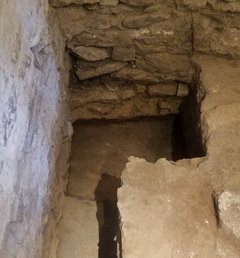
The excavations conducted by the Raba Kistner archaeologists for the preservation project have continued to reveal interesting information concerning the construction and use of the Long Barrack. The units at the north end of the Long Barrack have revealed that along the exposed portion of the interior, there is a distinct soil change from a light brown soil that contained limestone nodules and carbonates to a very dark brown clay. The very dark brown clay appears to contain less artifacts, and these mostly pertain to the early occupation period of the mission.
Spanish Colonial ceramics, Native American-made ceramics, and ferrous metal have been encountered in the dark clay. Excavations extended to approximately 150–160 cm (59–63 inches) below the datum by the end of the week. The datum is a set point in each unit from which the depth measurements are taken to insure consistency when recording the data. It appears that the bottom of the foundation may have been encountered, but another level will likely be excavated to confirm.
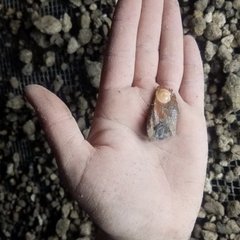
On the exterior of the north wall of the Long Barrack, the pair to the interior unit has extended to approximately 90 cm (35.4 inches) below the datum. Under a cobble limestone feature, archaeologists encountered a pocket of dark soils that contained charcoal bits as well as an increase in the amount of lead-glazed Spanish Colonial Ceramics (Galera and Sandy Paste Lead-Glazed wares). The pocket was approximately 10 cm (4 inch) in thickness, so by the next level the archaeologists were back to encountering a lighter soil with more limestone pieces.
At approximately 80 cm (31.5 inch) below the datum, the archaeologists began encountering a compacted caliche surface. The archaeologists finished the week by delineating the compacted caliche surface.
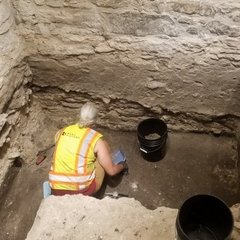
The foundation exposed on the exterior of the structure reveals some major issues. There is quite a bit of stones that appear to be missing and a void-cavity was noted adjacent to the foundation. Archaeologists are taking great care while working in this area to prevent undermining the integrity of the wall.
The pair of units on the interior and exterior of the central portion of the Long Barrack west wall have also encountered some interesting information. On the exterior, much of what the archaeologists have been uncovering appears to have been mixed soils likely due to the construction activities in the Plaza during the early 1900s and again in 1976. Limestone rubble, mortar fragments, concrete pieces, and broken brick tiles were noted in the soils.
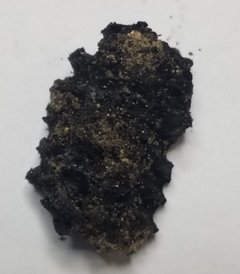
A small lead shot, possibly the size used for a pistol, was recovered from these mixed soils. By the end of the week, it appeared that the archaeologists were possibly seeing an end to the disturbed soils and may have encountered more intact layers. The foundation revealed in the exterior unit appears to be wider than the upper portion of the wall. The archaeologists are currently approximately 90 cm (35.4 inch) below the datum.
On the interior of the Long Barrack, the pair to the exterior unit encountered some very exciting finds during the last two days of the week. At approximately 120 cm (47.2 inch) below the datum, archaeologists encountered a pocket of charred materials. Upon inspection, the charred pieces were fragments of burned corncobs. It is exciting for archaeologists to find organic materials like this that specifically speak about the diets of the inhabitants.
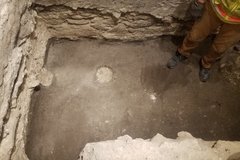
As corn was introduced to this region by the Spanish, it would be safe to assume that the corncobs are related to the Spanish Colonial occupation of the site. In addition to the corncob fragments, two post holes were noted and will be further examined the following week. By the end of the week, the archaeologists had excavated to approximately 130 cm (51.2 inch) below datum.


